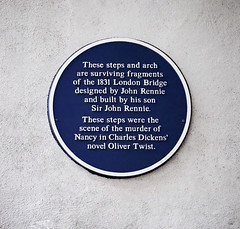London Bridge
Commemorated on 1 plaque
These steps and arch are surviving fragments of the 1831 London Bridge designed by John Rennie and built by his son Sir John Rennie. These steps were the scene of the murder of Nancy in Charles Dickens' novel Oliver Twist.
Montague Close, London, United Kingdom where it sited

